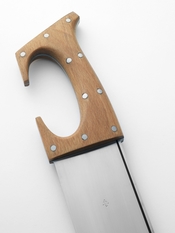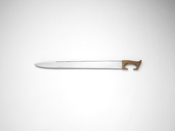Medieval Weapons Weapons are the tools of today and the death of tomorrow. At one time all weapons were tools. They were a means of survival among a harsh planet and cruel animals. The age of knights changed the true meaning of these tools forever. They now possessed the power of life and the power of death. Europe was an ever-growing bushel of civilizations. These civilizations were always under threat from other growing civilizations. At this point tools became weapons. Weapons are the tools of life, and the objects of death.
The year is 1232. Somewhere in northern Europe, a Saxon castle is under attack. In the fields for miles around, thousands of soldiers viciously fight. Metal strikes metal, arrows strike flesh, rock strikes rock. No matter how good these soldiers are, weapons will ultimately decide the battle. These weapons can be divided into three categories. Melee, or hand-to-hand weapons, includes clubs, swords, daggers, saxes, hand axes, and some spears.
These weapons are classified today as wedges, because they cut through things. Small-scale missile weapons include other spears, bows and arrows, throwing axes, and crossbows. These weapons were classified as levers, because they have a fulcrum, a resistance arm and an effort arm. Siege, or large-scale weapons, include catapults and battering rams. Melee weapons were, perhaps, the most important ones in any medieval battle. These weapons are also considered to be levers. They would be classified as third class levers.
The earliest melee weapons were clubs. Existing from Neanderthal times, these simple thick sticks were quickly replaced by blade weapons. However, some tribes continued to use clubs as throwing weapons. Others gave clubs to their leaders as batons of command. Still other tribes placed spikes on the ends of the clubs, turning them into maces. Soon enough, maces evolved into...


